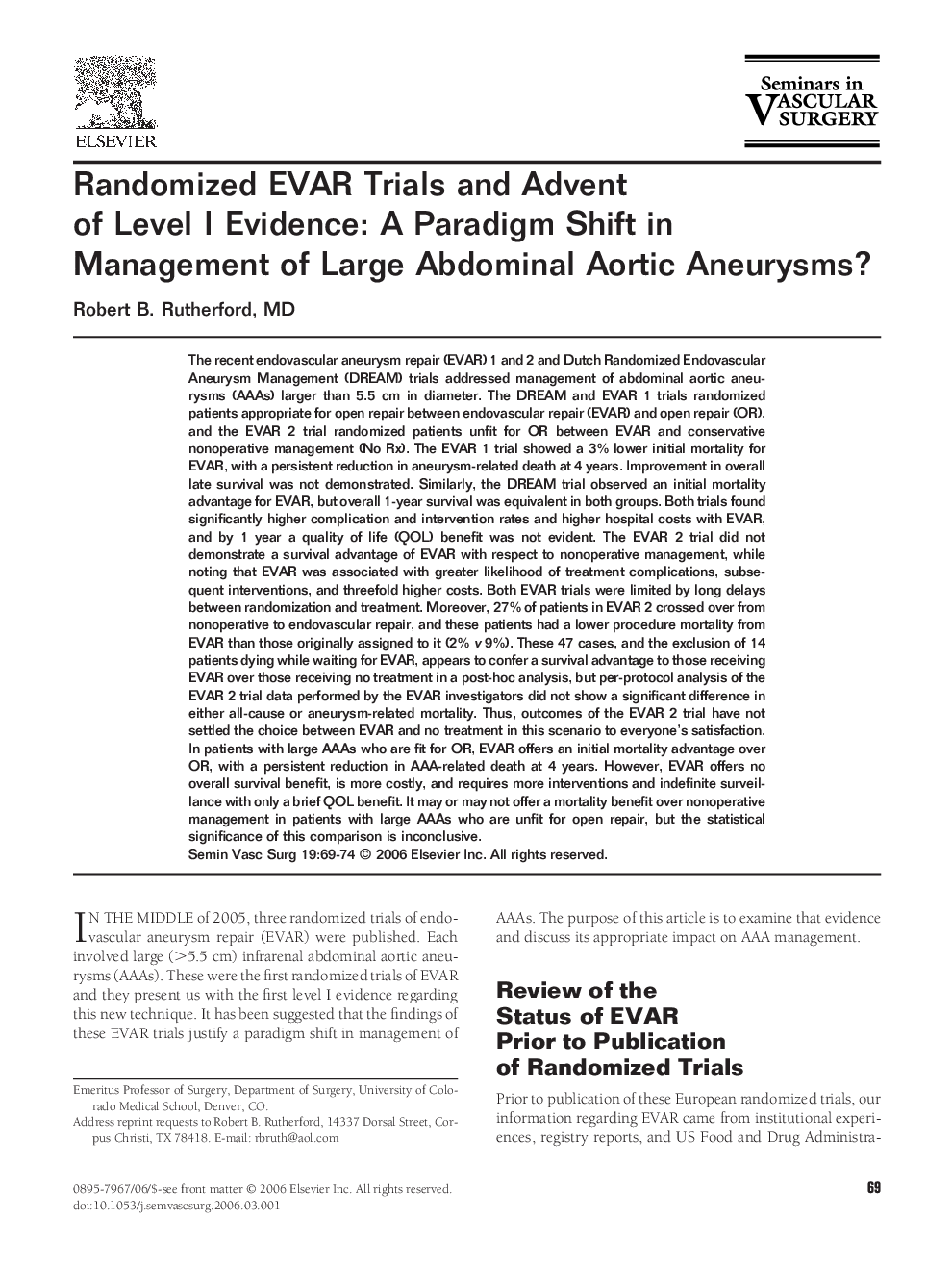| Article ID | Journal | Published Year | Pages | File Type |
|---|---|---|---|---|
| 3026550 | Seminars in Vascular Surgery | 2006 | 6 Pages |
The recent endovascular aneurysm repair (EVAR) 1 and 2 and Dutch Randomized Endovascular Aneurysm Management (DREAM) trials addressed management of abdominal aortic aneurysms (AAAs) larger than 5.5 cm in diameter. The DREAM and EVAR 1 trials randomized patients appropriate for open repair between endovascular repair (EVAR) and open repair (OR), and the EVAR 2 trial randomized patients unfit for OR between EVAR and conservative nonoperative management (No Rx). The EVAR 1 trial showed a 3% lower initial mortality for EVAR, with a persistent reduction in aneurysm-related death at 4 years. Improvement in overall late survival was not demonstrated. Similarly, the DREAM trial observed an initial mortality advantage for EVAR, but overall 1-year survival was equivalent in both groups. Both trials found significantly higher complication and intervention rates and higher hospital costs with EVAR, and by 1 year a quality of life (QOL) benefit was not evident. The EVAR 2 trial did not demonstrate a survival advantage of EVAR with respect to nonoperative management, while noting that EVAR was associated with greater likelihood of treatment complications, subsequent interventions, and threefold higher costs. Both EVAR trials were limited by long delays between randomization and treatment. Moreover, 27% of patients in EVAR 2 crossed over from nonoperative to endovascular repair, and these patients had a lower procedure mortality from EVAR than those originally assigned to it (2% v 9%). These 47 cases, and the exclusion of 14 patients dying while waiting for EVAR, appears to confer a survival advantage to those receiving EVAR over those receiving no treatment in a post-hoc analysis, but per-protocol analysis of the EVAR 2 trial data performed by the EVAR investigators did not show a significant difference in either all-cause or aneurysm-related mortality. Thus, outcomes of the EVAR 2 trial have not settled the choice between EVAR and no treatment in this scenario to everyone’s satisfaction. In patients with large AAAs who are fit for OR, EVAR offers an initial mortality advantage over OR, with a persistent reduction in AAA-related death at 4 years. However, EVAR offers no overall survival benefit, is more costly, and requires more interventions and indefinite surveillance with only a brief QOL benefit. It may or may not offer a mortality benefit over nonoperative management in patients with large AAAs who are unfit for open repair, but the statistical significance of this comparison is inconclusive.
